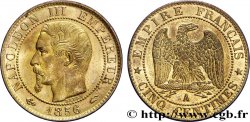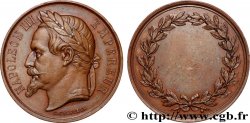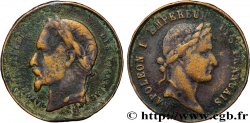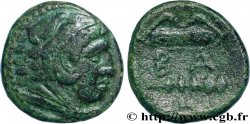Назад 1/1
E-auction 569-512269 - fme_459737 - SECOND EMPIRE Médaillette, Mariage de Napoléon III et Eugénie
Чтобы принять участие в торгах, вы должны войти в систему и стать подтвержденным участником аукциона. Войдите, чтобы сделать ставку. Ваш аккаунт будет подтвержден в течение 48 часов. Не ждите до закрытия торгов, чтобы зарегистрироваться.Сделав ставку на данный товар, вы вступаете в юридическое соглашение на покупку выбранного товара и нажатием кнопки «Сделать ставку» подтверждаете принятие вами условий интернет-аукционов cgb.fr.
Ставка может бить сделана только в полном эквиваленте евро. Торги закроются согласно времени, указанному в описании товара, все ставки, сделанные после закрытия торгов, учитываться не будут. Не следует откладывать предложение вашей ставки до последнего момента, так как система может не успеть обработать вашу заявку, и ваша ставка не будет принята. Более детальную информацию вы найдёте здесь: FAQ по интернет-аукционам.
БЕСПЛАТНО.
БЕСПЛАТНО.
| Оценить : | 45 € |
| Цена : | 14 € |
| Максимальная предлагаемая цена : | 17 € |
| Конец торгов : | 11 March 2024 19:50:20 |
| Участников : | 3 Участников |
Тип Médaillette, Mariage de Napoléon III et Eugénie
Дата: 1853
Монетный двор / Город: 75 - Paris
Металл: brass
Диаметр: 23,5 mm
Ориентация осей монеты: 12 h.
Вес: 5,15 g.
Век: Lisse
Пуансон: sans poinçon
Комментарии о состоянии
Très intéressante médaillette avec un bel aspect général
Происхождение:
Cet exemplaire provient de la descendance directe du graveur Auguste-François Michaut (1786-1879)
Лицевая сторона
Аверс: легенда: NAPOLÉON EMPEREUR EUGÈNIE IMPÉRATRICE.
Аверс: описание: Têtes accolées à gauche, d’Eugénie avec son diadème et un collier de perles et de Napoléon laurée.
Обратная сторона
Реверс: легенда: UNIS POUR LE BONHEUR DE LA FRANCE // 30 / JANVIER / 1853.
Реверс: Описание: Légende circulaire et en trois lignes.
Комментарий
Le 2 décembre 1852, Louis-Napoléon Bonaparte devient l'Empereur Napoléon.
L'Empereur étant célibataire et sans postérité légitime, la question de la succession dynastique n'est pas tranchée. Plusieurs membres des différentes familles régnantes européennes sont approchés pour un éventuel mariage impérial mais sans donner de résultats, notamment en raison des mœurs du prétendant (Napoléon III est déjà au moins le père de deux enfants naturels et vit avec une ancienne courtisane). En 1849, il a fait la connaissance de la jeune comtesse de Teba lors d'une réception à l'Élysée. De haut lignage espagnol, éduquée au couvent du Sacré-Cœur rue de Varenne à Paris, Eugénie de Montijo est une jeune femme instruite et cultivée de la noblesse, proche de Stendhal et de Prosper Mérimée. Dès leur rencontre, celui qui n'est alors que le prince-président est séduit. Le siège qu'il entreprend auprès d'Eugénie dure deux ans. Les familiers de l'Empereur sont au début assez partagés envers la comtesse espagnole, certains souhaitant que l'Empereur se lie avec une famille régnante comme autrefois Napoléon avec Marie-Louise. Le 12 janvier 1853, un incident lors d'un bal aux Tuileries, où la jeune Espagnole se fait traiter d'aventurière par l'épouse d'un ministre, précipite la décision de Napoléon III de demander Eugénie en mariage alors qu'il vient de mettre un terme à sa relation avec Miss Howard.
Le 29 janvier 1853, le mariage civil de Napoléon III avec Eugénie de Montijo est célébré aux Tuileries puis, le 30 janvier, le mariage religieux a lieu à Notre-Dame. Pour cette occasion, l'Empereur signe 3 000 ordres de grâce et fait savoir que toutes les dépenses du mariage seraient imputées sur le budget de sa liste civile alors qu'Eugénie refuse une parure de diamants offerte par la Ville de Paris et demande que la somme correspondante soit consacrée à la construction d'un orphelinat.
On December 2, 1852, Louis-Napoleon Bonaparte became Emperor Napoleon.
The Emperor being single and without legitimate posterity, the question of dynastic succession is not settled.. Several members of the various European ruling families were approached for a possible imperial marriage but without any results, notably because of the morals of the suitor (Napoleon III was already the father of at least two natural children and was living with a former courtesan).. In 1849, he met the young Countess of Teba at a reception at the Élysée Palace.. Of high Spanish lineage, educated at the Sacré-Coeur convent on rue de Varenne in Paris, Eugénie de Montijo was an educated and cultured young woman of the nobility, close to Stendhal and Prosper Mérimée.. From the moment they met, the one who was then only the prince-president was seduced. The siege he undertook with Eugenie lasted two years. The Emperor's friends were initially quite divided about the Spanish countess, some wanting the Emperor to become friends with a ruling family, as Napoleon had once been with Marie-Louise.. On January 12, 1853, an incident during a ball at the Tuileries, where the young Spanish woman was called an adventurer by the wife of a minister, precipitated Napoleon III's decision to ask Eugénie to marry him, having just ended his relationship with Miss Howard..
On January 29, 1853, the civil marriage of Napoleon III with Eugénie de Montijo was celebrated at the Tuileries, then, on January 30, the religious marriage took place at Notre-Dame.. For this occasion, the Emperor signed 3,000 orders of pardon and made it known that all the expenses of the marriage would be charged to the budget of his civil list while Eugénie refused a diamond set offered by the City of Paris and asked that the corresponding sum be devoted to the construction of an orphanage.
L'Empereur étant célibataire et sans postérité légitime, la question de la succession dynastique n'est pas tranchée. Plusieurs membres des différentes familles régnantes européennes sont approchés pour un éventuel mariage impérial mais sans donner de résultats, notamment en raison des mœurs du prétendant (Napoléon III est déjà au moins le père de deux enfants naturels et vit avec une ancienne courtisane). En 1849, il a fait la connaissance de la jeune comtesse de Teba lors d'une réception à l'Élysée. De haut lignage espagnol, éduquée au couvent du Sacré-Cœur rue de Varenne à Paris, Eugénie de Montijo est une jeune femme instruite et cultivée de la noblesse, proche de Stendhal et de Prosper Mérimée. Dès leur rencontre, celui qui n'est alors que le prince-président est séduit. Le siège qu'il entreprend auprès d'Eugénie dure deux ans. Les familiers de l'Empereur sont au début assez partagés envers la comtesse espagnole, certains souhaitant que l'Empereur se lie avec une famille régnante comme autrefois Napoléon avec Marie-Louise. Le 12 janvier 1853, un incident lors d'un bal aux Tuileries, où la jeune Espagnole se fait traiter d'aventurière par l'épouse d'un ministre, précipite la décision de Napoléon III de demander Eugénie en mariage alors qu'il vient de mettre un terme à sa relation avec Miss Howard.
Le 29 janvier 1853, le mariage civil de Napoléon III avec Eugénie de Montijo est célébré aux Tuileries puis, le 30 janvier, le mariage religieux a lieu à Notre-Dame. Pour cette occasion, l'Empereur signe 3 000 ordres de grâce et fait savoir que toutes les dépenses du mariage seraient imputées sur le budget de sa liste civile alors qu'Eugénie refuse une parure de diamants offerte par la Ville de Paris et demande que la somme correspondante soit consacrée à la construction d'un orphelinat.
On December 2, 1852, Louis-Napoleon Bonaparte became Emperor Napoleon.
The Emperor being single and without legitimate posterity, the question of dynastic succession is not settled.. Several members of the various European ruling families were approached for a possible imperial marriage but without any results, notably because of the morals of the suitor (Napoleon III was already the father of at least two natural children and was living with a former courtesan).. In 1849, he met the young Countess of Teba at a reception at the Élysée Palace.. Of high Spanish lineage, educated at the Sacré-Coeur convent on rue de Varenne in Paris, Eugénie de Montijo was an educated and cultured young woman of the nobility, close to Stendhal and Prosper Mérimée.. From the moment they met, the one who was then only the prince-president was seduced. The siege he undertook with Eugenie lasted two years. The Emperor's friends were initially quite divided about the Spanish countess, some wanting the Emperor to become friends with a ruling family, as Napoleon had once been with Marie-Louise.. On January 12, 1853, an incident during a ball at the Tuileries, where the young Spanish woman was called an adventurer by the wife of a minister, precipitated Napoleon III's decision to ask Eugénie to marry him, having just ended his relationship with Miss Howard..
On January 29, 1853, the civil marriage of Napoleon III with Eugénie de Montijo was celebrated at the Tuileries, then, on January 30, the religious marriage took place at Notre-Dame.. For this occasion, the Emperor signed 3,000 orders of pardon and made it known that all the expenses of the marriage would be charged to the budget of his civil list while Eugénie refused a diamond set offered by the City of Paris and asked that the corresponding sum be devoted to the construction of an orphanage.








 Cообщить об ошибке
Cообщить об ошибке Распечатать страницу
Распечатать страницу Отправить мой выбор
Отправить мой выбор Задать вопрос
Задать вопрос Consign / sell
Consign / sell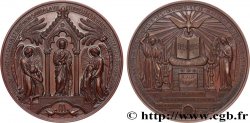
 Информация
Информация

